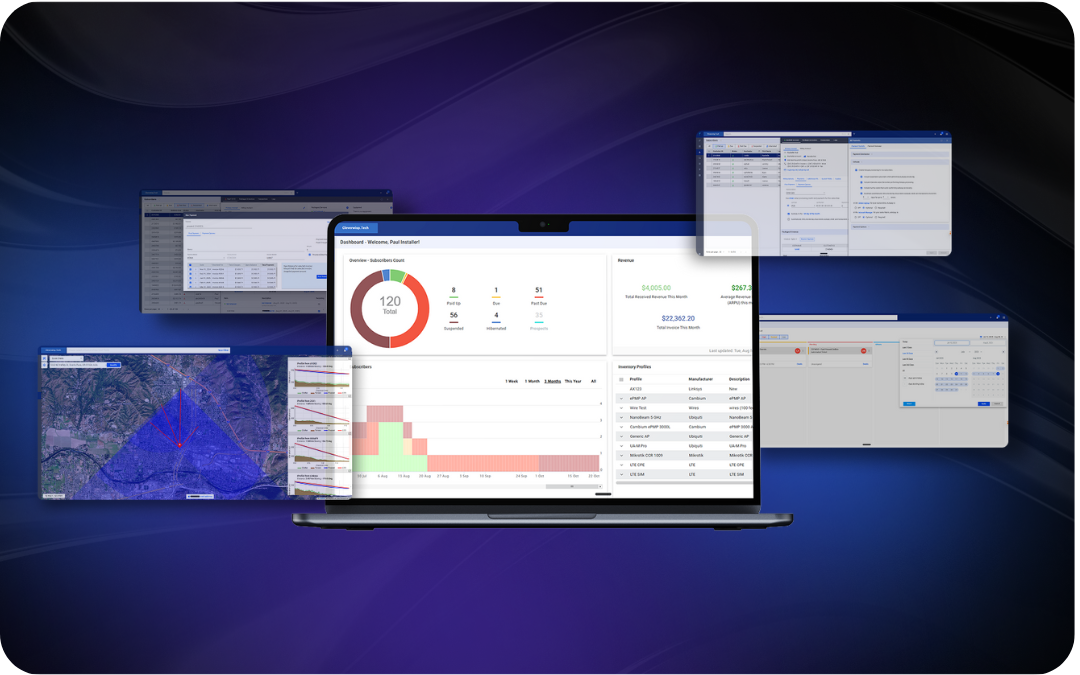The lure of rapid territory expansion is seductive, so be warned: Frankenstein wireless infrastructure dilutes your investment.
As you build your network, the temptation to cut costs may win out. Before you launch into “easy” and “inexpensive” measures, know that some can backfire and cost you both time and money. Don’t exchange your reputation and profitability for perceived savings. Remember that every dollar you invest wisely in your WISP becomes a tool that generates residual income.
Building your network infrastructure well the first time makes the most financial sense.
Avoid a Creaky and Costly MicroPoP Infrastructure
When your WISP is small, it’s easy to succumb to cutting corners to secure subscribers. We all do it the first time around and then realize, if we were to do it again, we would build differently.
When you can’t connect your prospect to one of your towers, it is common to consider turning a neighboring customer into a “MicroPoP.”
MicroPoPs can be done properly. After all, small cell wireless deployments can increase bandwidth and coverage, which is a big win. Sadly, it is common for MicroPoPs, also known as relays or repeaters, to end up as contractless sites on a residential roof with no redundancy while being connected to an oversubscribed access point (AP).
We will explore three ways to avoid creating problems as you seek to satisfy the demands of today’s gamers and telecommuters with MicroPoPs.
Secure Your Site Investments
Building a MicroPoP is kind of like putting your money in a little box on a stranger’s roof; this can be scary if you really think about it. Can you repair your MicroPop at the drop of a hat, or might you end up staring down the barrel of a shotgun held by a surprised guy in his underwear who happened to mute his phone?
If you can’t secure the reliability of your distribution site, then your investment isn’t secure. It’s only a matter of time before something happens — property sales, deaths or divorces — that cause you an extended outage, and you lose hundreds of residual dollars and put your investment at risk.
In addition to ensuring you have the time, talent and hardware resources to keep your sites online, be sure to have clearly communicated and agreed upon policies and processes. When you are creating your own co-location facilities on residential rooftops, consider consulting legal counsel regarding contracts and/or easements.
Service Standards Preserve Wireless Infrastructure
Power and uplink outages are a real problem so it’s best practice to have redundancy.
Setting standards for your infrastructure can help you build a scalable and healthy network. Without carefully considering what happens when things go wrong, you will start to believe that running from one fire to another is the only way of life. At the end of the day, consumers have very high expectations for Internet service performance and it is the provider’s job to warranty that expectation.
For example, assume a power outage at 9:30 pm on a Saturday night. When are you going to call the homeowner or dispatch a tech? Immediately? In an hour? In the morning? Or will you wait for customer complaints? I generally recommend a minimum 12-hours of backup power at every site to minimize the demand of urgent situations.
Minimize Growing Pains
No one intends to Frankenstein their wireless infrastructure, but often WISPs grow organically without long-term planning.
When engineering your network, you can safely assume that subscribers will not consume all provisioned speed all of the time. This means you can, and should, oversubscribe your hardware’s resources, without over-utilizing it. This is the interest your network earns for you as you convert connectivity into income.
In some cases, an AP has sufficient reserve bandwidth to use to feed another site, which can earn you “easy and inexpensive” income. The mistakes come from a failure to realize the impact of robbing Peter’s AP to pay Paul’s.
Quality of service starts to break down when you “double oversubscribe” by feeding a point-to-multipoint site from another point-to-multipoint device rather than a backhaul. It is like cutting a pie and then subdividing a piece of that pie; a piece of a piece usually doesn’t satisfy. It can only work with really large pieces. As a WISP consultant, I find that failing to have a dedicated backhaul is a common cause of performance issues. I recommend being aware of this problem that sneaks up on many WISPs.
When relying on a point-to-multipoint device to serve another tower, you have two factors which end up affecting the quality and/or capacity. Less bandwidth is the obvious consequence, but also consider the increased latency and jitter that comes with an AP that is sharing its time with both subscribers and other sites. Subscribers will become increasingly aware of the sluggish performance as your subscriber density grows.
If you want your network to satisfy your customers’ expectations then it’s worth building sufficient dedicated capacity into your distribution network. Any way you slice the pie, you quickly end up with too few resources to service all customers with “Frankensteined” topology.
Keep an eye out for future posts with tips, first-hand knowledge, and insights on how to overcome common headaches and complex challenges that face today’s Internet Service Providers.
Joshaven Potter is a WISP pioneer with extensive experience in management and engineering. He supports and consults with Visp.net’s WISP clients to supercharge WISP and ISP growth.










